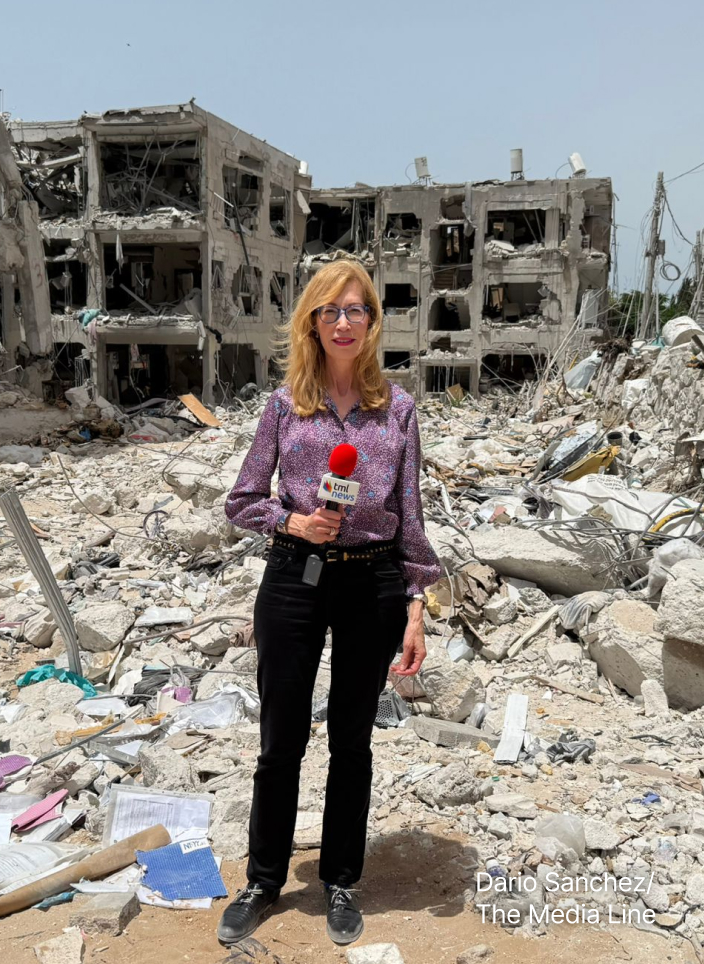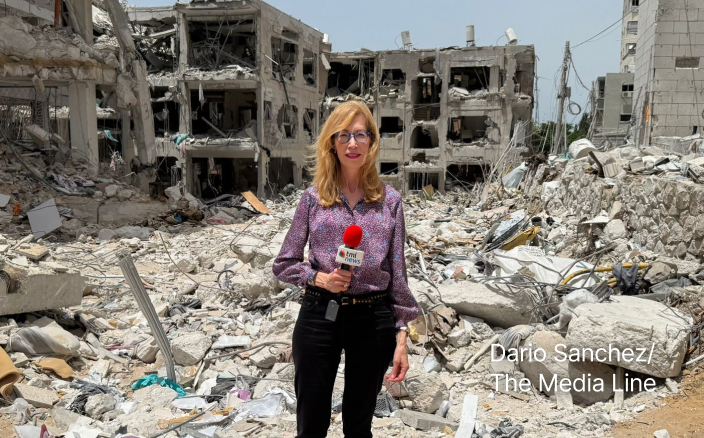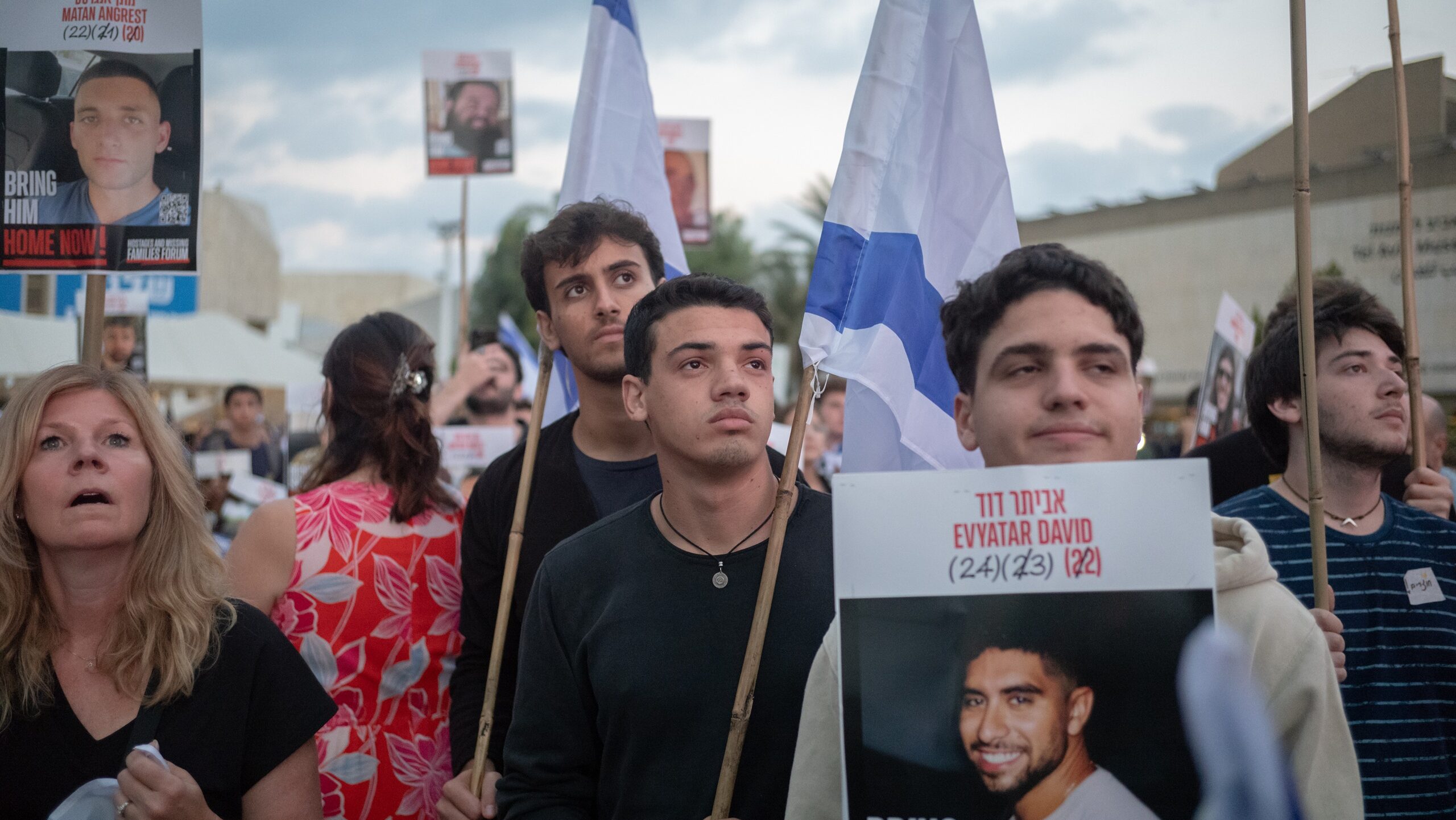Israel, Hamas Begin First Hostage–Prisoner Exchange Under Gaza Ceasefire
The Red Cross launched transfers in Gaza while Israel staged nearly 2,000 Palestinian prisoners for release and prepared medical intake at Re’im base
Israeli authorities said Monday morning in Israel that the International Committee of the Red Cross (ICRC) had taken custody of the first seven Israelis to be released from Gaza, opening a daylong operation in which 20 living hostages are to be freed in exchange for nearly 2,000 Palestinian prisoners. The handover began in the northern Gaza Strip under security arrangements set last week by mediators from the United States, Qatar, Egypt, and Turkey. President Donald Trump, who pushed both sides to break a months-long impasse, was scheduled to land in Israel, meet hostage families, address the Knesset, and then fly to Sharm el-Sheikh, Egypt, for a summit on the agreement’s next steps.
The Israeli military said ICRC vehicles were en route to designated meeting points inside Gaza to receive hostages and transfer them to Israeli forces, who would escort them to the Re’im military base in southern Israel for initial medical and psychological assessments and reunions with relatives. Israeli television carried images of Red Cross convoys and helicopters preparing to shuttle returnees to hospitals in the Tel Aviv area. In parallel, buses arrived at Ofer Prison in the occupied West Bank and at Ktzi’ot Prison in Israel’s south to stage Palestinian prisoners for release, with Israeli officials saying those from Ofer would be sent to the West Bank and those from Ktzi’ot driven to Gaza.
Israeli media named the first seven hostages handed to the ICRC as Gali Berman, Ziv Berman, Matan Angrest, Alon Ohel, Omri Miran, Eitan Mor, and Guy Gilboa-Dalal. Officials said the remaining 13 living hostages would be transferred later Monday from additional locations inside the Strip, following security checks along prearranged corridors.
The terms reflect a tightly choreographed first stage of a broader deal intended to halt more than two years of war. Under the arrangement announced Friday, Israeli forces pulled back to a new defensive line inside Gaza by noon that day, opening a 72-hour window for the initial exchanges and deliveries of humanitarian aid. The Izz al-Din al-Qassam Brigades, Hamas’s armed wing, published a list of 20 living hostages slated for release; Israeli authorities said it matched their roster of captives believed to be alive. The exchange also covers the return of remains of Israelis who died in captivity, a sensitive process that officials cautioned could take time as searches proceed.
The ICRC, which has managed past swaps and medical evacuations in this conflict and elsewhere, emphasized both the visible and quiet roles it plays when negotiating access and movement. “Reducing the role of the I.C.R.C. as just a transport service really misses the bigger picture of what we do,” the organization says in its public materials. On Friday, ICRC President Mirjana Spoljaric Egger welcomed the deal and urged compliance. “Release operations must be carried out safely and with dignity,” she said. “Humanitarian assistance must resume urgently at full capacity and be delivered to people safely wherever they are. The ceasefire must hold. Lives depend on it.”
Release operations must be carried out safely and with dignity
ICRC delegates have faced sustained criticism from Israelis and Palestinians—Israelis for not reaching hostages in Hamas custody to check on health needs, Palestinians for lack of access to detainees in Israeli facilities. The organization says it was denied prison visits in Israel after October 2023 but interviewed more than 1,250 individuals after their release to document detention conditions, while also working behind closed doors to secure access and transfers. Julien Lerisson, who heads the ICRC delegation in Israel and the Palestinian territories, argued the group’s stance is what enables operations like Monday’s to move forward. “Neutrality provides us with the ability to try and influence both sides to act in accordance with the laws of war,” he wrote earlier this year, adding that confidential diplomacy, not public confrontation, “makes humanitarian work possible.”
Israeli prison authorities prepared for the outbound side of the swap before dawn. “Prisoners are waiting in detention halls, wearing prison uniforms,” said Chen Avraham, a spokesman for the Israeli Prison Service, describing how groups would be staged for release to the West Bank and Gaza depending on which facility held them. Military planners, for their part, readied air and ground transport, medical support, and secure corridors inside the Strip to expedite the handovers while trying to avoid large crowds at the exchange points—an effort to minimize risk after past ceremonies were criticized as propaganda stunts.
Give the gift of hope
We practice what we preach:
accurate, fearless journalism. But we can't do it alone.
- On the ground in Gaza, Syria, Israel, Egypt, Pakistan, and more
- Our program trained more than 100 journalists
- Calling out fake news and reporting real facts
- On the ground in Gaza, Syria, Israel, Egypt, Pakistan, and more
- Our program trained more than 100 journalists
- Calling out fake news and reporting real facts
Join us.
Support The Media Line. Save democracy.


Hamas framed the operation as a validation of its strategy while cautioning that timelines depend on Israeli compliance. “The agreement that was reached is the fruit of our people’s steadfastness and resistance,” the al-Qassam Brigades said in a statement. “The occupation could have returned most of its captives alive many months ago, but it continued to stall.” The group reiterated that it remains “committed to an agreed-upon timetable, so long as Israel does its part as well,” and repeated its contention that it had sought to end what it called a “war of annihilation” earlier.
The staging inside Israel centered on the Re’im base, the intake site for released hostages. Health Ministry Director-General Moshe Bar Siman-Tov said the national health system had mobilized to receive both survivors and the bodies of those who died in Gaza captivity. “Alongside the hope and joy, there is also immense sorrow for the families of the hostages who will be brought to eternal rest in Israel,” he said, thanking hospitals, community health providers, and the Abu Kabir National Institute of Forensic Medicine and promising expanded psychological services.
The larger diplomatic canvas is set to widen quickly if Monday’s exchanges and humanitarian deliveries proceed as planned. The Egyptian presidency said the Sharm el-Sheikh meeting—convened by President Abdel Fattah el-Sisi with backing from Washington and key Arab and European partners—would seek to lock in the truce and map a path to broader regional security guarantees. “The summit aims to end the war in the Gaza Strip, enhance efforts to bring peace and stability to the Middle East, and usher in a new phase of regional security and stability,” the president’s office said, adding that the meeting “comes in light of U.S. President Trump’s vision for achieving peace in the region.”
I think the reality is that some of the hostages we may never get back
The American president’s itinerary underscores the White House’s bet that tangible progress on hostages can propel a wider process. Vice President JD Vance, previewing the day’s events on Fox News, said the administration expected most remains of deceased captives to be located and returned but cautioned against assuming full accounting is possible. “I think the reality is that some of the hostages we may never get back,” he said, referring to the fallen. “But I do think most of them, with some effort, we’ll be able to give them to their families so they at least have some closure.” The Knesset prepared to host the American leader with tightened security and displays welcoming “President Trump,” a rare wartime address that Israeli officials hope will reinforce the fragile pause on the ground.
For Israelis and Palestinians, the day’s choreography carries heavy emotional weight after years of loss. The war began when Hamas led an assault on southern Israel on October 7, 2023, killing about 1,200 people and abducting roughly 250, according to Israeli figures. Israel’s subsequent campaign in Gaza left tens of thousands dead, according to Gaza’s health authorities, and devastated civilian infrastructure. Two earlier, short truces saw dozens of hostages released in return for hundreds of Palestinian prisoners, while Israeli forces rescued a small number of captives alive in raids. Monday’s ratio—about 2,000 inmates for 20 living hostages—is among the most lopsided swaps in Israeli history, recalling the 2011 exchange in which more than 1,000 prisoners were freed for a single soldier.
The logistics of the latest deal have been shaped by those precedents. Israeli forces repositioned inside Gaza to reduce friction at handover sites. Aid deliveries accelerated over the weekend, with UN agencies reporting “real progress” in moving food, medical supplies, tents, and other essentials northward into areas that faced acute shortages. Israeli officials said the agreement obligates Hamas to return bodies of deceased captives as they are located, a process that could extend beyond the initial 72-hour window. Security officials also warned that sporadic breaches or local firefights could not be ruled out as units adjusted to new lines.
The political disagreements that delayed a deal for two years have not disappeared. Disarmament and the question of Hamas’s role in any future governing structure in Gaza remain unresolved. The Palestinian Authority’s president, Mahmoud Abbas, was invited to the Egyptian summit, a point the US president welcomed in an interview, even as Israeli leaders remain divided about any role for the Ramallah-based leadership in Gaza’s future. Whether Israeli representatives would attend the summit was not immediately clear.
Inside Israel, the return of captives has become the most salient public demand shaping wartime politics. Hostages Square in Tel Aviv—an esplanade that grew into the central gathering point for families and supporters—filled overnight with Israelis watching live news feeds, though organizers urged restraint near sensitive facilities. Government spokespeople said the 20 living hostages would be transferred to the ICRC at one time in the morning and flown or driven to reunions at Re’im. “The hostages were expected to be released at one time to the Red Cross early Monday morning local time,” said government spokeswoman Shosh Bedrosian, outlining the sequence of intake and reunification.
Military leaders praised the cross-branch preparations that enabled the transfer to start promptly after first light. While the Israel Defense Forces did not issue a comprehensive timetable for subsequent handovers, they confirmed medical teams, trauma counselors, and logistics units were standing by at bases and hospitals. Israeli media carried images from the Re’im helipad as the first rotary-wing aircraft landed at daybreak, one piece of an operation that officials said would stretch into late morning with another release expected in Gaza’s south.
For the ICRC, one lesson from prior exchanges loomed over Monday’s scenes: Prioritize safety even when optics are uncomfortable. After a controversial episode in January in which Hamas staged a “signing ceremony” before releasing a group of women, Lerisson said the organization continued transfers despite “difficult scenes” to avoid jeopardizing people forced to participate or those still in captivity. The policy appeared unchanged on Monday, with Red Cross escorts moving quickly through prearranged corridors, guarded by de-confliction protocols that the organization insisted on with both parties.
Whether the ceasefire can harden into a sustained cessation of hostilities will depend on what follows: the scope and tempo of subsequent releases; clear rules for aid distribution; and political understandings about Gaza’s security, border management, and reconstruction. The summit at Sharm el-Sheikh is meant to sketch those contours, with Arab states, European leaders, and the UN secretary-general expected to attend. The American president has privately told interlocutors he sees the agreement as a signature achievement—calling it “the biggest thing I’ve ever done”—but even supporters concede it is an opening step, not an endpoint.
For now, the day’s measure of success is simple: safe returns, orderly transfers, and the absence of gunfire. If the initial exchanges are completed and the truce holds, negotiators hope the dynamic can be extended, hostages and remains can keep moving home, and long-deferred arguments over governance and security can shift from the battlefield to conference tables. That remains a large “if,” but Monday’s first movements—convoys, buses, helicopters, and the named returnees—mark a rare moment in this war in which both sides have practical reasons to follow through.

